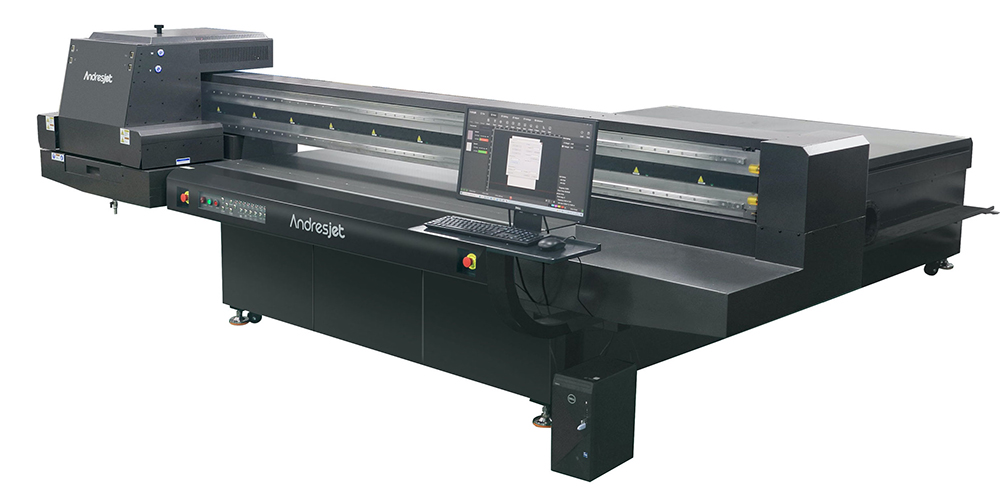What Are the Key Factors to Consider When Buying a UV Flatbed Printer?
What Are the Key Factors to Consider When Buying a UV Flatbed Printer?
When it comes to purchasing a UV flatbed printer, there are several key factors to consider. These printers, known for their versatility and efficiency, have become essential tools in various industries, including advertising, packaging, and product decoration. However, choosing the right printer for your specific needs requires careful evaluation. In this article, we will explore the critical factors to keep in mind while shopping for a UV flatbed printer.

1. Printing Needs and Applications
The first and foremost consideration should be your printing needs. What type of materials will you be printing on? Will you be printing on rigid or flexible media? UV flatbed printers offer the versatility to print on various materials, including glass, metal, plastic, wood, and even leather. Identifying your primary printing surfaces will help determine the type of printer and inks you require.
Additionally, consider the applications of your prints. Are they for indoor or outdoor use? UV-curable inks, which are typically used in UV flatbed printers, are known for their durability and resistance to fading, making them suitable for both indoor and outdoor applications. However, different inks might be better suited for specific uses, so it’s essential to match your ink choice to your printing needs.
2. Print Quality and Resolution
Print quality and resolution are crucial factors when selecting a UV flatbed printer. Resolution refers to the number of dots per inch (dpi) that a printer can produce. A higher dpi means more detail and sharper images. For most commercial applications, a resolution of 600 dpi or higher is considered high quality.
Print quality also depends on the printer’s ability to handle different types of media and inks. Some printers excel at printing on specific materials, while others might offer more versatility. Look for printers with precise inkjet technology and advanced printheads for optimal print quality.
3. Printer Size and Capacity
The size of the printer and its printing capacity are important considerations, especially if you have space constraints or high-volume printing needs. UV flatbed printers range in size from small desktop models to large industrial printers. Determine the maximum print size you require and choose a printer that can accommodate those dimensions.
Furthermore, consider the printer’s throughput capacity. If you have a high demand for prints, look for a printer with a faster printing speed and the ability to handle larger print jobs efficiently.
4. Cost and Budget
Cost is always a significant factor when investing in new equipment. UV flatbed printers vary widely in price, depending on their features, size, and capabilities. Set a budget and research printers that fall within your price range. Remember to factor in additional costs such as maintenance, inks, and other consumables.
5. Reliability and Durability
When purchasing a UV flatbed printer, reliability and durability are paramount. Look for printers from reputable brands with a proven track record of quality and performance. Read reviews from other users and industry experts to assess the printer’s longevity and reliability. A sturdy and well-built printer will serve you better in the long run, reducing downtime and maintenance costs.
6. Technical Support and Service
Consider the availability of technical support and service when selecting a printer. A good manufacturer or supplier should provide comprehensive support, including installation, training, and ongoing maintenance. Find out if they offer on-site service, remote support, or have a responsive customer care team. This will ensure that any technical issues are promptly resolved, minimizing downtime and maximizing productivity.
7. Scalability and Upgrade Options
If you envision expanding your printing business in the future, consider a printer’s scalability and upgrade options. Some UV flatbed printers allow for easy upgrades, such as adding more printheads or enhancing software features. Choose a printer that can grow with your business needs.
8. Ink Costs and Availability
Ink is a significant expense in any printing operation. When evaluating UV flatbed printers, consider the cost and availability of inks. Some printers use proprietary inks, which might be more expensive or harder to source. Look for printers that offer cost-effective ink solutions with good coverage and durability.
9. Environmental Impact
With increasing environmental awareness, it’s important to consider the ecological impact of your printing activities. Look for UV flatbed printers that use low-VOC (Volatile Organic Compounds) inks and have energy-efficient features. Many modern printers are designed with sustainability in mind, reducing waste and energy consumption.
10. User-Friendliness
The ease of use of a UV flatbed printer is another important consideration. A user-friendly interface, intuitive software, and straightforward operations can significantly enhance productivity and reduce training time for new operators. Look for printers with a reputation for being easy to set up, use, and maintain.
In conclusion, buying a UV flatbed printer involves careful consideration of multiple factors. From printing needs and applications to cost, reliability, and environmental impact, each aspect is crucial in selecting the right printer for your business. By weighing these key factors and conducting thorough research, you can make an informed decision that will serve your printing needs effectively and efficiently.
